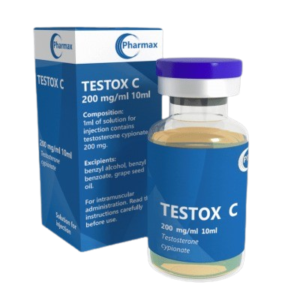Clomid
Clomid, also known by its generic name clomiphene citrate, is a medication that has gained popularity for its diverse uses in both men and women. Understanding the benefits, uses, and potential side effects of Clomid is crucial for anyone considering its use. This comprehensive guide aims to provide detailed information on Clomid and its various aspects to help individuals make informed decisions regarding its usage.
I. Introduction
A. Brief overview of Clomid
Clomid is a selective estrogen receptor modulator (SERM) that has been primarily used in the treatment of infertility. However, its applications have expanded beyond fertility treatments, and it is now utilized in various other medical fields, such as endocrinology and sports medicine.
B. The importance of understanding Clomid’s uses and side effects
Before considering Clomid as a treatment option, it is essential to have a comprehensive understanding of its uses and potential side effects. This knowledge allows individuals to weigh the benefits against the risks and make informed decisions in consultation with healthcare professionals.
II. What is Clomid?
A. Definition and chemical composition
Clomid is a non-steroidal medication that belongs to the class of drugs called triphenylethylene derivatives. Its chemical
composition includes clomiphene citrate as the active ingredient. Clomid is available in tablet form and is typically taken orally.
B. How Clomid works in the body
Clomid works by binding to estrogen receptors in the body, specifically in the hypothalamus. By blocking these receptors, Clomid prevents the normal negative feedback mechanism of estrogen on the hypothalamus. This leads to an increase in the production of follicle-stimulating hormone (FSH) and luteinizing hormone (LH), which are essential for ovulation in women and testosterone production in men.
III. Clomid for Men
A. Treating low testosterone
 Clomid has been found to be effective in stimulating the production of testosterone in men with low testosterone levels. It acts by increasing the release of LH from the pituitary gland, which in turn stimulates the testicles to produce more testosterone. This can help alleviate symptoms associated with low testosterone, such as fatigue, decreased libido, and mood changes.
Clomid has been found to be effective in stimulating the production of testosterone in men with low testosterone levels. It acts by increasing the release of LH from the pituitary gland, which in turn stimulates the testicles to produce more testosterone. This can help alleviate symptoms associated with low testosterone, such as fatigue, decreased libido, and mood changes.
B. Clomid for male fertility
In addition to its testosterone-boosting effects, Clomid can also be used to improve fertility in men. It works by increasing the production of LH and FSH, which play crucial roles in sperm production. By stimulating the testicles to produce more sperm, Clomid can enhance male fertility and increase the chances of successful conception.
C. Clomid in bodybuilding
- Benefits for bodybuilders
Clomid is often used by bodybuilders who have used anabolic steroids and want to restore their natural testosterone production. It helps kickstart the body’s endogenous testosterone production, which can be suppressed during steroid use. This allows bodybuilders to maintain their gains and prevent the negative side effects associated with low testosterone levels.
- Recommended dosages
The recommended dosage of Clomid for bodybuilders is typically lower than that used for fertility treatments. It is important to follow the guidance of a healthcare professional or a knowledgeable sports medicine specialist when using Clomid in bodybuilding. Dosages may vary depending on individual needs and the specific anabolic steroid cycle used.
- Potential risks and side effects
While Clomid is generally well-tolerated, it is not without potential risks and side effects. Some common side effects include hot flashes, mood swings, nausea, and visual disturbances. In rare cases, Clomid may cause more severe side effects, such as ovarian hyperstimulation syndrome (OHSS) in women or testicular tumors in men. It is crucial to discuss potential risks and side effects with a healthcare professional before using Clomid.
IV. Clomid for Women
A. Inducing ovulation
Clomid is widely used in the treatment of female infertility due to anovulation, a condition where the ovaries do not release eggs regularly. By stimulating the release of FSH and LH, Clomid helps induce ovulation and increases the chances of successful conception.
B. Treating polycystic ovary syndrome (PCOS)
Polycystic ovary syndrome is a hormonal disorder that affects many women of reproductive age. It is characterized by hormonal imbalances and enlarged ovaries with multiple small cysts. Clomid can be used to regulate ovulation in women with PCOS and improve their fertility.
C. Other fertility-related uses
- Recommended dosages
The recommended dosage of Clomid for women depends on the specific fertility issue being addressed. Typically, treatment begins with a low dose, which may be increased gradually if necessary. The duration of treatment may also vary depending on individual response and the advice of a healthcare professional.
- Potential risks and side effects
Clomid use in women may be associated with side effects such as hot flashes, abdominal discomfort, breast tenderness, and mood swings. In rare cases, it may lead to ovarian
hyperstimulation syndrome (OHSS), a condition characterized by enlarged ovaries and fluid accumulation in the abdomen. It is important for women undergoing Clomid treatment to be closely monitored by their healthcare provider to minimize the risk of complications.
V. Clomid and Side Effects
A. Common side effects
Some common side effects of Clomid include hot flashes, mood swings, headaches, and nausea. These side effects are usually mild and temporary, resolving on their own as the body adjusts to the medication. It is important to communicate any discomfort or concerns with a healthcare professional.
B. Rare but serious side effects
While rare, Clomid can potentially cause more serious side effects that require immediate medical attention. These include severe abdominal pain, visual disturbances, shortness of breath, and signs of an allergic reaction such as rash, itching, or swelling. If any of these symptoms occur, medical assistance should be sought promptly.
C. Managing side effects and when to seek medical attention
If individuals experience bothersome side effects from Clomid, there are strategies to help manage them. For example, taking the medication with food can help alleviate nausea, and using over-the-counter pain relievers may help with headaches. However, if side effects become severe or persistent, it is important to consult with a healthcare professional to determine the best course of action.
VI. How to Take Clomid
A. Proper dosage and administration
The dosage of Clomid prescribed will depend on the specific condition being treated and individual factors. It is crucial to follow the healthcare provider’s instructions regarding dosage and administration. Typically, Clomid is taken orally for a specific duration as determined by the healthcare professional.
B. Timing and cycle considerations
Clomid is typically started on specific days of the menstrual cycle to optimize its effects. The healthcare provider will provide instructions on when to begin treatment, based on the individual’s menstrual cycle.
C. Monitoring progress and adjusting treatment
Regular monitoring is essential during Clomid treatment. This may involve tracking ovulation through methods such as basal body temperature charting or ovulation predictor kits. The healthcare provider may also perform blood tests and ultrasounds to assess the response to treatment and make any necessary adjustments.
VII. Clomid Dosage
A. Standard dosage recommendations
The standard dosage of Clomid varies depending on the purpose of its use. For fertility treatment in women, a typical starting dosage is 50 mg per day for 5 days, usually starting on the fifth day of the menstrual cycle. Dosages may be adjusted based on individual response.
B. Factors that influence dosage adjustments
Several factors can influence dosage adjustments, including the individual’s age, medical history, response to treatment, and any concurrent medications. It is important to communicate openly with the healthcare provider and provide accurate information to ensure the dosage is tailored to the specific needs of the individual.
C. Risks of over- or under-dosing
Taking too high or too low a dosage of Clomid can have adverse effects on treatment outcomes. An overdose of Clomid may increase the risk of side effects and complications, while an insufficient dosage may result in treatment inefficacy. It is crucial to adhere to the prescribed dosage and consult with a healthcare professional if any concerns arise.
VIII. Clomid for Post-Cycle Therapy (PCT)
A. The role of Clomid in PCT
Post-cycle therapy (PCT) is commonly used by individuals who have used anabolic steroids to help restore natural hormone production. Clomid is often included in PCT regimens due to its ability to stimulate the production of testosterone.
B. Optimal dosages and duration for PCT
The optimal dosages and duration of Clomid for PCT can vary depending on the individual and the specific steroid cycle used. It is recommended to work with a knowledgeable
sports medicine specialist or healthcare professional to determine the most appropriate dosages and duration for PCT.
C. Combining Clomid with other PCT drugs
Clomid is often used in combination with other medications during PCT to maximize its effectiveness. Commonly used drugs in conjunction with Clomid include selective estrogen receptor modulators (SERMs) and aromatase inhibitors. The specific combination and dosages will depend on individual needs and the goals of the post-cycle therapy.
IX. Buying Clomid
A. Where to buy Clomid safely and legally
Clomid is a prescription medication, and it is important to obtain it from a reputable source. It is best to consult with a healthcare professional who can provide a valid prescription and guide individuals on where to purchase Clomid from licensed pharmacies or authorized online retailers.
B. Avoiding counterfeit and unsafe products
Due to its popularity, counterfeit Clomid products may be available in the market. These counterfeit products may contain incorrect dosages or harmful substances, posing a risk to health. To avoid such risks, it is crucial to obtain Clomid from trusted sources and verify the authenticity of the product.
C. Factors to consider when comparing prices
When comparing prices for Clomid, it is important to consider factors beyond the cost alone. The reputation and reliability of the supplier, the quality of the product, and adherence to legal and safety regulations should also be taken into account. It is advisable to prioritize safety and quality over price when purchasing medications.
X. Frequently Asked Questions
A. Is Clomid safe for long-term use?
The safety of long-term Clomid use is not well-established. It is primarily used for specific durations and under the guidance of healthcare professionals. Long-term use may carry potential risks, and it is important to consult with a healthcare provider to determine the appropriate duration of treatment.
B. Can Clomid cause multiple pregnancies?
Clomid may slightly increase the risk of multiple pregnancies, such as twins or triplets. This is due to its effect on stimulating ovulation. The risk is generally low but should be discussed with a healthcare professional, particularly for individuals at higher risk of multiple pregnancies.
C. How long does it take for Clomid to work?
The time it takes for Clomid to work can vary depending on the individual and the specific condition being treated. In some cases, ovulation may occur within a few days of starting Clomid, while for others, it may take a few weeks. Monitoring and tracking ovulation can help determine the effectiveness and timing of Clomid treatment.
D. Are there any natural alternatives to Clomid?
There are no natural alternatives to Clomid that have been proven to have the same effects in inducing ovulation or boosting testosterone production. However, certain lifestyle changes, such as maintaining a healthy weight, managing stress, and following a balanced diet, may support overall reproductive health.
E. Can I combine Clomid with other fertility treatments?
In some cases, Clomid may be used in combination with other fertility treatments, such as intrauterine insemination (IUI) or in vitro fertilization (IVF). The specific treatment plan will depend on individual factors, and it is important to work closely with a fertility specialist to determine the most appropriate approach.
XI. Conclusion
A. Weighing the pros and cons of Clomid use
Clomid can be a valuable medication for both men and women, offering benefits such as improved fertility, testosterone restoration, and hormonal regulation. However, it is important to weigh these potential benefits against the risks and side effects associated with Clomid use.
B. The importance of working closely with healthcare professionals
When considering Clomid as a treatment option, it is crucial to work closely with healthcare professionals who can provide personalized guidance and monitoring throughout the treatment process. Their expertise and oversight can ensure the safe and effective use of Clomid.







Reviews
There are no reviews yet.